Baoshan Efforts: Bridging “Digital Divide” and Popularise Personalized Education
At the English classroom of Qiuzhen Middle School in Baoshan District, a transformation of traditional teaching and learning mode is underway. The English teacher Fan Xiaoqing, different from a traditional teacher’s role, sat on the ground together with her students in class, while an “AI teacher” joined them in the teaching process. The AI teacher, supported by a strong corpus with a large amount of data in the development stage, is able to answer students’ questions independently, serving to expand the area of students’ self-learning, ignite students’ enthusiasm for self-exploration, and improve language learning effect. Now, this transformative teaching mode has been applied by all member schools in the Qiuzhen Education Group through the “smart peer class” platform, where students in different schools can have the class together online.
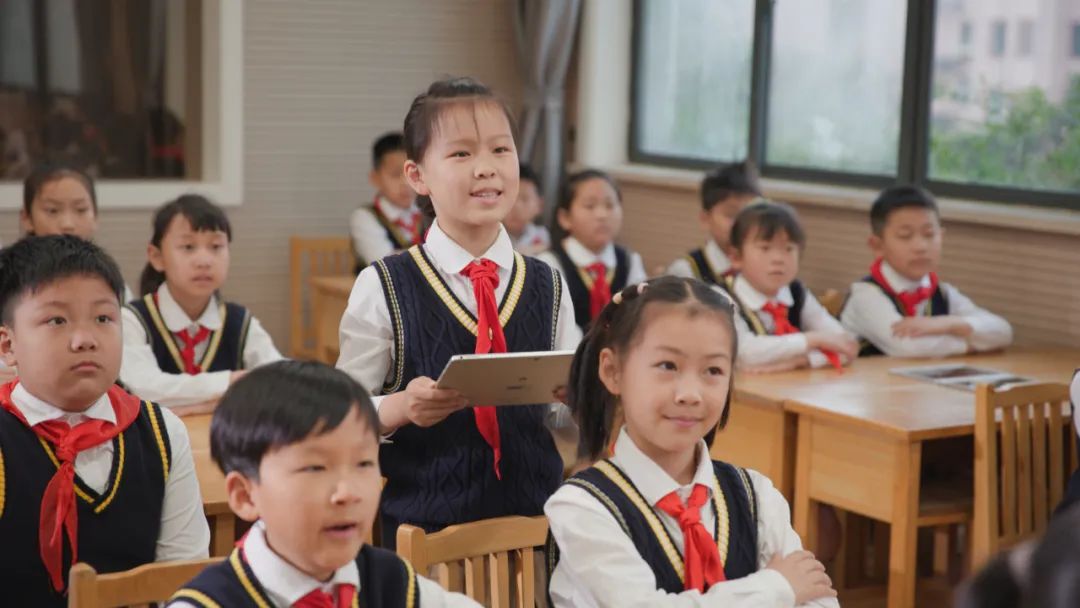
As the first “pilot district of AI-facilitated teaching” approved by the Ministry of Education in Shanghai and the “experimental area for the digital transformation of education in Shanghai”, Baoshan District has made dedicated efforts to the high-quality development of teachers in recent years. With a focus on the digital environment construction, research and training mode transformation, teaching paradigm reshaping and development model innovation, it promoted the overall development of the digital infrastructure, “smart peer class” platform, AI teaching assistants, and targeted training of teachers, in effort to train high-quality and innovative “teachers of the future” and facilitate the education of the whole district to be fairer, more balanced, high-quality, efficient, flexible, smart and green.
“Building a digital campus for personalized education is as fun as playing Lego”: construction of digital infrastructure No. 1 project to create a viable education ecology
Baoshan District takes the digital transformation of education as the focal point, and actively explores “new environment, new system, new platform, new model, and new evaluation” approaches to promote the capacity development of teachers. In terms of digital infrastructure building, Baoshan has made every effort to build “Weilaibao”, a digital teaching platform, especially to ensure it functions smoothly in data transmission and communication. The platform has helped reduce the burden and increase the efficiency of teachers’ daily work.
“Weilaibao” is used by a total of 336 education entities at all levels in the district, with 13,400 certified/active teachers, 170,000 registered students, and 245,100 participating parents. About 14,000 interactions were made by over 100,000 parents and teachers daily, which meets the needs of teachers in their daily communication with parents.
As for suppliers, “Weilaibao” is currently equipped with 100 applications from 50 app suppliers, and 30 public interfaces have been made available. The standard interface and application access specifications of the third edition of the application center have been released, and the service has been invoked more than 800,000 times. As such, Baoshan makes full use of the healthy competition mechanism of the market, fully stimulates the initiative and enthusiasm of enterprises to optimize their products, and promotes the update of digital products, ensuring that “Weibaobao” develops into a platform of “daily necessity” rather than a “luxury” for teachers.
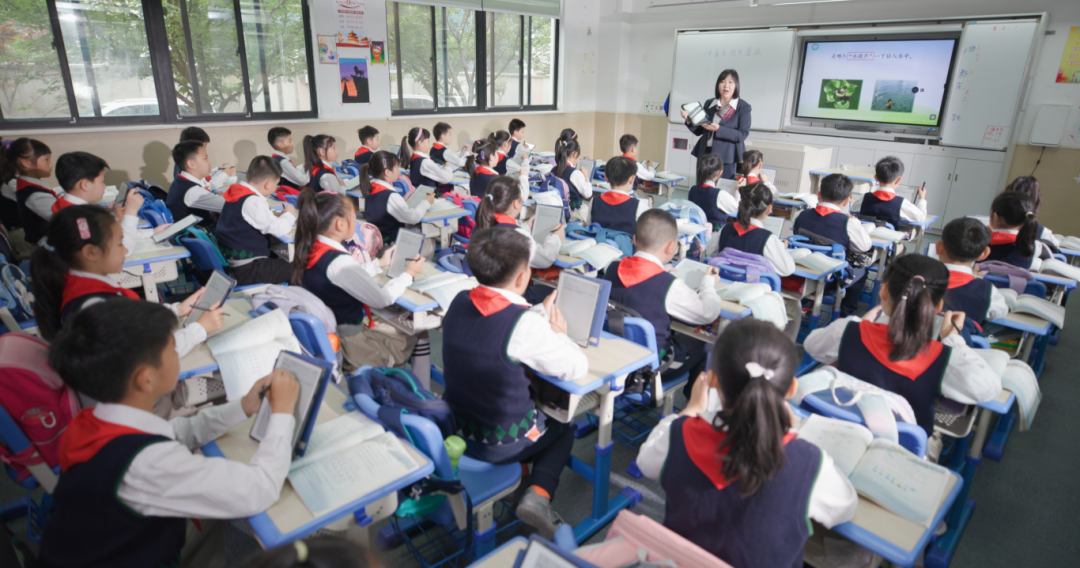
“Weilaibao” not only makes the daily work of teachers more convenient, but also the communication between parents and teachers closer. The platform provides integrated services including data collection, data storage, data processing, data sharing, data management and control, and data display, which realizes data interoperability between the Education Bureau and schools, and among different business systems, reducing data collection and processing costs for schools and the government. At the same time, it provides ready access for communication among the Ministry, schools and parents, which makes it more convenient for teachers in their contact with parents.
In the process of digital transformation, Baoshan has pioneered the building of virtual school application scenarios, which aims to improve the teachers’ capacity in meta technology application through training in 10 areas including metaverse application, use of editing tools and scene construction to improve teaching quality and efficiency. It has piloted interdisciplinary teaching schemes in more than 20 schools based on meta-universe technology to provide students with a more exploratory and inspiring learning experience and promote the all-round development of students. Meanwhile, the training of meta-universe technology aims to develop teachers’ digital literacy and their ability to explore and practice new educational concepts and methods, thus promoting the innovation of educational models.
What’s more, to make the digital transformation convenient, cost-efficient and fruitful, Baoshan launched a flexible, easy-to-use “low code” platform, where teachers can create meta classrooms or other applications through simple operations such as drag and drop. This makes building a personalized digital campus as interesting as playing Lego and as convenient as making PPT, winning high recognition and wide participation by schools and teachers.
Let “AI teachers” enter the classroom and let excellent teachers organize cross-school classes: build a smart peer classroom to promote the balanced development of education
What changes can new technology bring to the classroom? The math demonstration class “Percentages in Everyday Life” at Qiuzhen Middle School represents a good example of it. Three teachers, namely Zhu Hui, a math teacher Qiuzhen Middle School, Wu Yiling, a math teacher at Qiuzhen Middle School North Campus, and Wan Yanqing, a math teacher at Hulin Middle School, taught the same class through the online platform.
Whether it is pre-class exercise, interactions in class, or practice evaluation after class, teachers and students in the three classrooms, though geographically distant from each other, can make better decisions and judgments of teaching through data analysis, communicate and interact with each other more conveniently, and give instant evaluation feedback, creating a new data-driven classroom mode featuring personalized guidance and dynamic grouping.
This is one of the innovative teaching scenes in Baoshan’s exploration of building a “smart peer class”, an innovative educational experiment that has been underway for more than three years. This kind of “peer classroom” is widely applied in the teaching schemes in Qiuzhen Middle School.
In a physics class, Zhang Wei Ye and Zhu Jianan in Qiuzhen Middle School had the lesson “force synthesis—gravity” on the online platform. The two teachers used the AI teaching data to gain an overview of the students’ understanding of the topic and carry out hierarchical teaching. The students can also conduct gravity experiments with rice and soybeans in groups, thus gaining a more vivid understanding of various physics concepts.
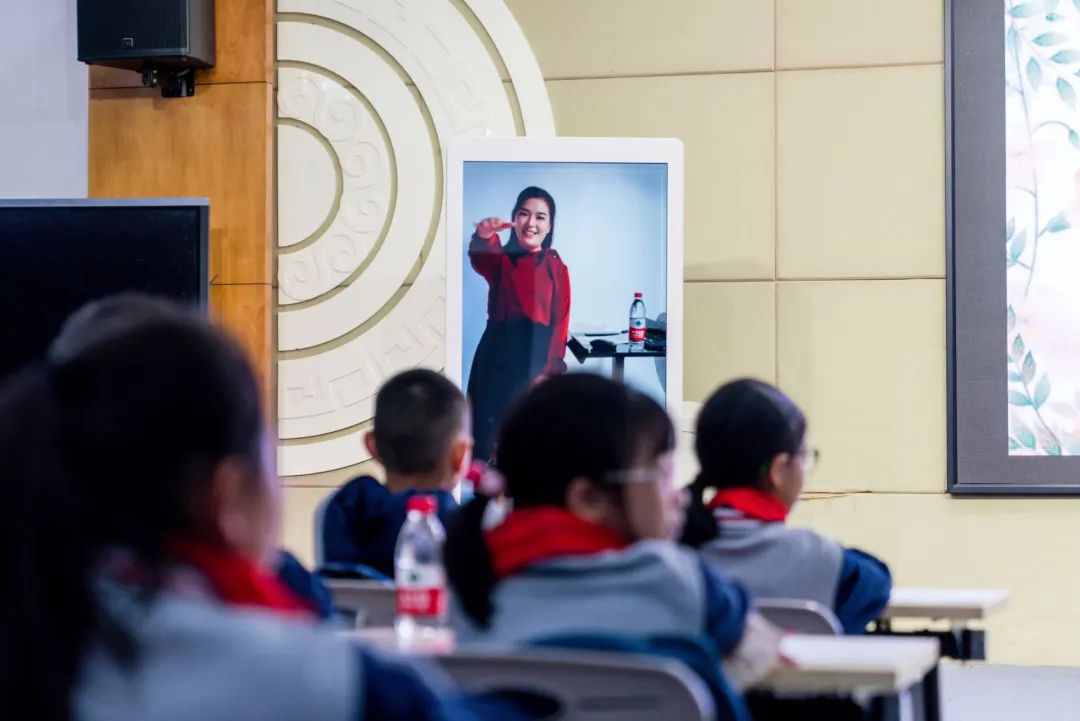
According to the Principal of Qiuzhen Education Group, the Group is currently exploring the deep integration of big data and AI technology with classes, education and governance, developing the AI learning assistant for Chinese, mathematics and English courses, striving to explore the teaching pattern and education ecology of future schools, and creating a “1+1+X” intelligent peer community featuring full disciplinary coverage, full participation, full process promotion, and full scene application.
To solve the problem of uneven distribution of high-quality teaching resources, Baoshan moved the thematic classes of well-known teachers online and organized “1+N smart peer classes” with schools in different regions such as Yunnan and Xinjiang. Currently, about 10,000 teachers have participated in the program, delivering radiation effects in course delivering as well as pre- and after-class research. As such, high-quality teaching resources in Baoshan could best exert their radiating effects.
The sharing of educational resources through smart classes also brought changes to after-school activities in primary and secondary schools. After class, Jin Fei and Dong Jun, two teachers from Baoshan Youth Activity Center played “magic” with thin A4 papers. Rolled into a pipe shape, A4 papers can even uphold two boxes of mineral water! Such interesting after-school activities greatly aroused students’ curiosity and enthusiasm for learning. What’s more, such extension activities as “paper structure” and “Baiyinfang origami—space creativity” brought by the two teachers can also be shown to students in Shanghai Baoshan No. 2 Central Primary School, Shanghai Baoshan Experimental Primary School, Baoshan Juquan School and Huilin Road Primary School of Shanghai through “smart peer class”.
The relevant person from the Education Bureau of Baoshan District said that as a pilot district for “AI-facilitated teaching” approved by the Ministry of Education, Baoshan District is not only actively promoting resource sharing through moving classes online, which serves also as an important measure to help schools with poorer education resources, but also exploring ways to promote the collaborative progress of teachers through technological empowerment. “In the past, a teacher lectured a lesson or a class, while in the “smart peer class”, a group of teachers can organize a class together with the collective wisdom.
“Leave simple problems to the system and complex problems to the classroom”: exploring knowledge graph and adaptive education to build a personalized teaching system
Teachers and students in Shanghai are no strangers to online classes. However, making online teaching more intelligent, personalized and targeted while attracting the interest of students remains a tough task for many teachers. To solve the above problems, a knowledge graph team from Baoshan District, after years of dedicated research, has established the first set of biological knowledge graphs in China that can be applied to online teaching in high schools, and designed an adaptive learning system suitable for online and offline teaching. This system has been put into pilot practice in Shanghai Xingzhi Middle School for many years. Statistics show that in students’ academic proficiency test, 70.4% of the students in the pilot class got A, and their academic performance was generally improved with the same time spent on the study as others. The project has been awarded the special prize of the “Teaching Achievement Award for Basic Education in Shanghai” and the second prize of the “National Teaching Achievement Award for Basic Education”, and was listed as a project for the application of “three assistants” in the digital transformation of education in Shanghai. The program has radiated to more than 300 schools in Shanghai and other provinces, benefiting more than 80,000 students.
“We want to mine every student’s learning data through an intelligent system so as to design a personalized learning path for every student, making it possible to teach students according to their aptitude on large scale.” To make the intelligent system “understand” students better, Yan Baiyang, vice principal of Wusong Middle School, and his team built a dynamic, multidimensional knowledge graph of high school biology that is adaptive to the development of intelligent systems, and established a quantitative correlation between knowledge based on students’ learning data. In addition, they have also built the first intelligent adaptive learning system of high school biology for comprehensive capacity training, which reconstructs the classroom teaching paradigm and makes the class more targeted and efficient.
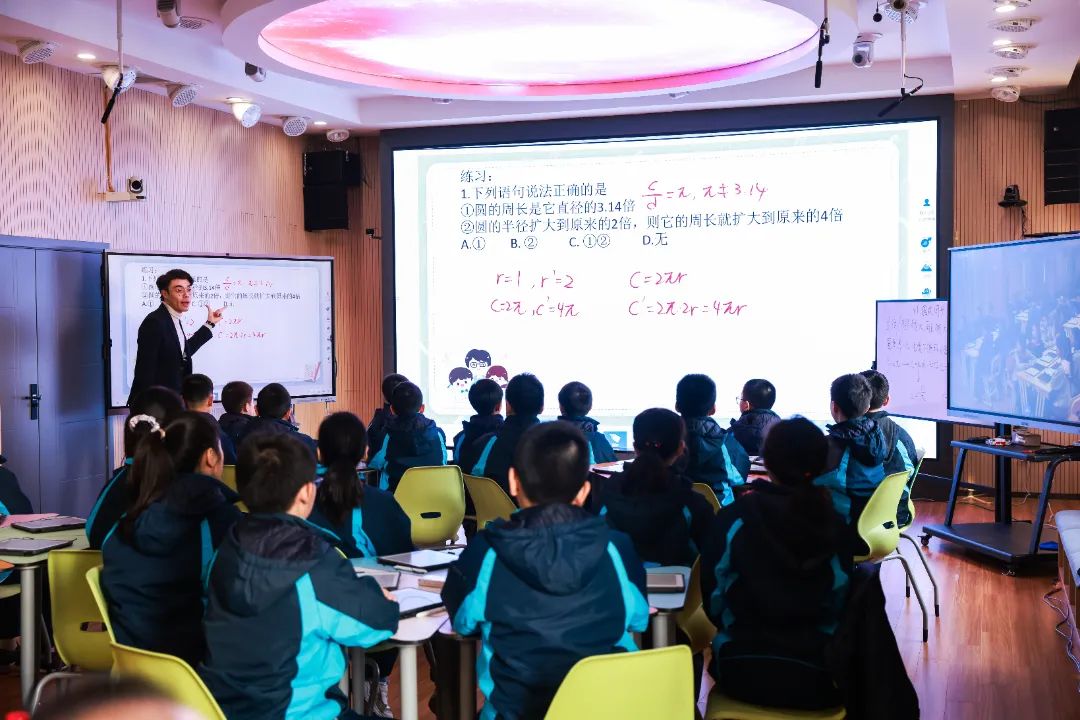
How can this particular knowledge graph be tailored to personalized education?
“For example, if I buy a pen online, the shopping platform will recommend ink first to me, based on the logic that 90% of the people who buy the pen would buy the ink. In this case, the correlation between the pen and the ink is 0.9.” Yan Baiyang believes that the knowledge graph has a similar logic to the big data of the e-commerce platform. For example, assume that the correlation coefficients of knowledge A and knowledge B, C and D are 0.9, 0.7 and 0.5 respectively. Then, when a student has difficulty understanding knowledge A, the algorithm will provide the information of knowledge B to the students as it has the highest correlation with knowledge A. This would make it a lot more convenient for students to figure out what they need.
Yan Baiyang and his team carried out the research “Development and Practice of Intelligent Adaptive Learning System in High School Biology Based on Knowledge Graph”, which later became an excellent case at the 2022 World Artificial Intelligence Conference. The biological knowledge graph and intelligent adaptive learning system have been popularized in Putuo, Minhang, Hongkou districts in Shanghai and cities in Jiangsu, Shandong, Henan and other provinces. In Fengxian district, for example, all high schools involving 37 teachers, 100 classes and 3,710 students have adopted the biological knowledge graph and intelligent adaptive learning system.
In Baoshan’s exploration of the digital transformation of education, the “subject knowledge graph” is a highlight achievement. Through the intelligent transformation of teaching resources, Baoshan has organized 966 core teachers and 58 project teams to carry out the first stage construction of multi-disciplinary and multi-dimensional knowledge graph and the first round of digital resource database construction based on subject knowledge graph, thus establishing a high-quality classroom resource database that could be shared by different teachers.
Through the construction and application of the “subject knowledge graph”, the pilot school systematically establishes correlations among different knowledge and quantifies these correlations through big data and algorithms, so that the knowledge graph adaptive system can diagnose and send feedback on the learning situation of the class and students according to the overall learning data, and give personalized assignments and learning resources. In this way, the simple problems are handed over to the system, while the complex problems are solved in the class. Class teaching as such can realize personalized education, which greatly reduces the class load and realizes targeted learning for different students.
“Excellent teachers in the future will certainly be those who make good use of artificial intelligence”: taking man-machine co-teaching as the starting point to promote the new curriculum and new teaching materials approach
In an era of fast AI advancement, whether human teachers would be replaced by artificial intelligence has been a hotly debated topic. In this regard, Baoshan actively explored the digital transformation of its education system with the view that in the future, excellent teachers will be those who make good use of artificial intelligence. To equip teachers with better technology capacity, Baoshan, besides gradually building resource bases, is also working persistently on various data-based projects, and it is comprehensively promoting the new curriculum and new teaching materials with man-machine co-teaching as the starting point.
Based on “20 Years of Problem-based Learning Mode: The Transformation of Learning and Teaching”, which won the first prize of national teaching achievements, Baoshan established an evidence-based platform for classroom analysis with “problems” as the thread, and achieved good results in providing systematic feedback. Based on AI natural speech semantic technology, it has built a problem classification and thinking analysis model for typical and problem-based teaching approaches, and a classroom analysis framework covering “student learning”, “teacher guiding”, “teacher-student interaction” and “subject-based teaching”. As such, it provides scientific and data-driven teaching analysis tools for schools and teachers to optimize teaching strategies and results. By far, the platform construction has been completed and a learning-centered, evidence-based class indicator system has been established, which is used in 16 provinces, autonomous regions and municipalities across 14 academic disciplines. A total of 27,963 lessons delivered by 8,376 teachers in 851 schools have completed classroom analysis, laying a solid foundation for large-scale classroom quality analysis and improvement.
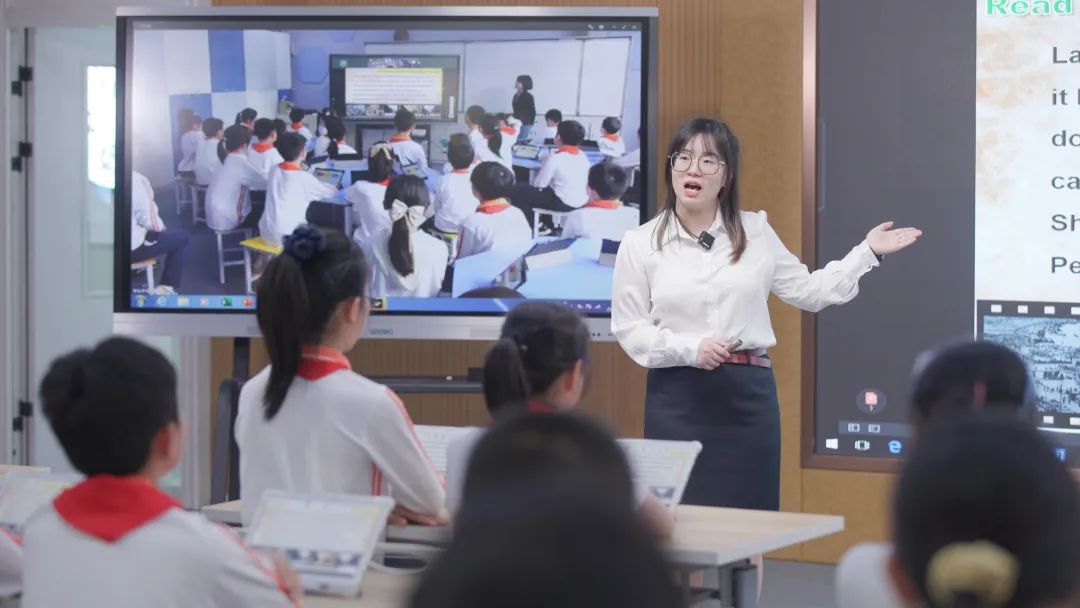
In addition, Baoshan is making every effort to promote the application of “three assistants” and reshape the teaching paradigm. The first “assistant” refers to the AI assistant that helps the teacher in finding online teaching resources and tools. The second assistant can support targeted teaching through data analysis and provide interactive tools for better teaching and learning experience, while the third is the extra-curricular tutoring assistant which conducts knowledge weakness analysis and personalized homework recommendations based on the individual and general learning situation, as well as automatic grading which greatly improves the teacher’s efficiency. At present, 9 schools are using the “three assistants” for all classes, such as Songyi Middle School, Baoshan Experimental School, the High School Affiliated to Shanghai University, Baoshan Middle School, Xingzhi Middle School, Gongfu Experimental School, and Gucun Science Park School. More than 20 pilot schools, including Nadian Middle School, Shanghai Baoshan No. 2 Central Primary School, Huilin Road Primary School of Shanghai, Shanghai Baoshan No. 1 Central Primary School, Shanghai Baoshan No. 3 Central Primary School, and Baohong Primary School are piloting the system.
What’s more, the mathematics and English teaching and research groups of the pilot schools carried out school-based research for the application of the “three assistants”, which aims to improve teachers’ abilities for research as well as the use of AI tools.
A set of data best illustrates the achievement: at present, AI assistants have been used by over 10,000 teachers and 80,000 students in Baoshan District, evidence of the popularity of AI assistants in teachers’ daily teaching and research work. In terms of resource construction, the platform now has 3.7091 million teaching and lesson preparation resources, 13.6982 million exercises, and 641,300 examination paper resources. All schools used the AI teaching assistant platform to issue intelligent tests more than 408,000 times, and 164.43 million homework has been submitted. Teachers have organized the teaching assistant platform to conduct competition courses at the district level for in-depth integration, generating 6 first- and 15 second-prize winners.
Prevent “small glass wearers” and “little overweights” and escort the healthy growth of students in an all-round way: promoting the comprehensive development of students
To promote targeted teaching and evaluation, Baoshan District uses intelligent technology to track and evaluate learning and teaching according to multi-dimensional data, and collects digital portrait information from six dimensions of “morality, intelligence, physical health, aesthetics, labor, and emotional well-being” to provide data basis for large-scale personalized teaching. For example, Baoshan has built the “Aibaoxing” online parent-school platform to provide more professional resources for family education, and developed the “students’ psychological well-being monitoring platform of Baoshan” to comprehensively evaluate students’ psychological development. In addition, using the “xuecong career planning platform”, the “career planning report” based on students’ digital portraits is generated to dig into students’ real needs and provides students with all-around growth support through the digital transformation of education.
To prevent the possible problems of getting myopia, overweight and psychological issues faced by teenager development, Baoshan has carried out projects such as “heart space” for psychological counseling and smart sports, built a physical education and training model combining virtuality and reality, and developed a psychological early warning system.
Baoshan District, together with Shanghai University of Sport, Shanghai Jiao Tong University, the Shanghai Sixth People’s Hospital as well as leading AI enterprises and other professional teams, has deployed the smart playground and monitoring room, AI martial arts gymnastics classroom, smart table tennis hall, smart bicycle room and other scenes, and applied VR football, table tennis and other special AI sports equipment in the pilot school. The physical education and health inspector system has developed more than 300 kinds of exercise formulas for more than 10,000 students, completed the intelligent national physical fitness test for 20,000 students, and cooperated with teachers to grasp the situation of students in multiple dimensions and timely follow-up feedback.
At the same time, to promote moral education innovation, the Education Bureau of Baoshan District has built a district-level “heart space” platform, which strengthens the intelligent technical support of the “full tutor system” of the teacher team and helps train teachers in information technology skills. At present, the “heart space” platform has generated 4,165 early warning messages and contributed significantly to protecting the healthy growth of students.
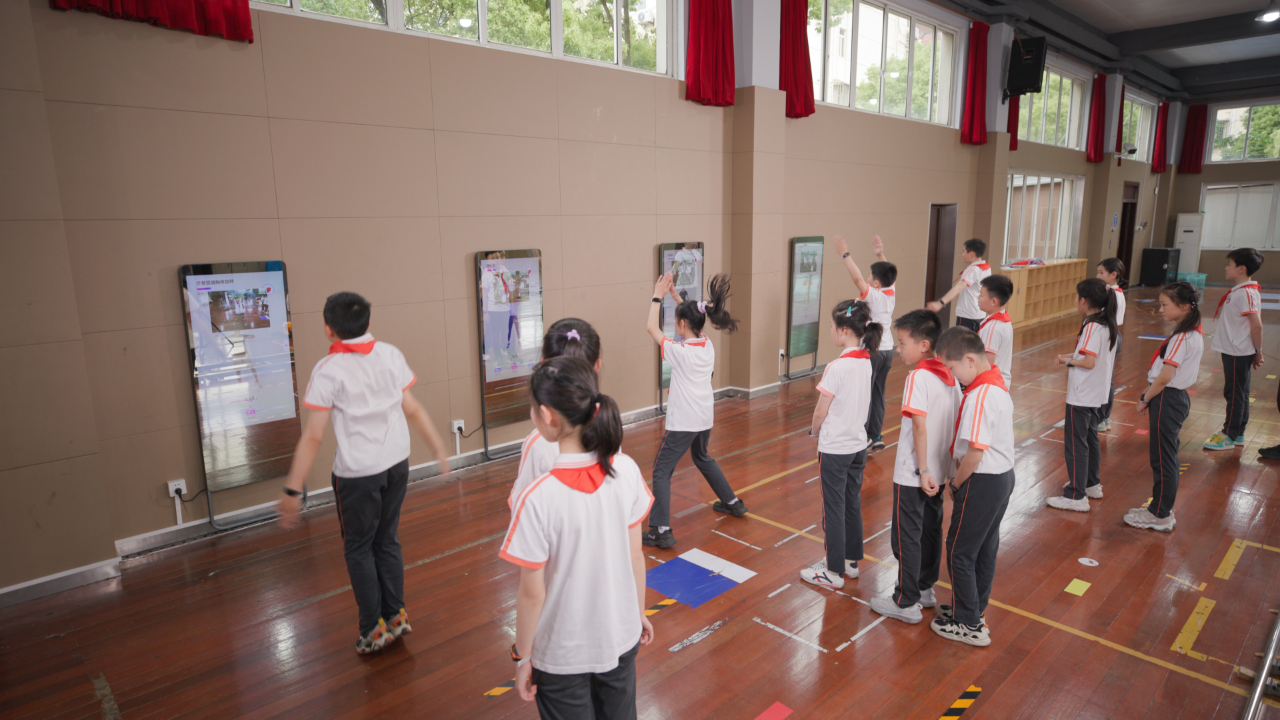
Next, Baoshan District will further explore the new model of “education data + AI model”, and make full use of the existing data platform and resources to form AI application scenarios around the whole process of teaching, learning, management and rating, thus exerting the best value of data to create a new paradigm of education digitalization.

宝山汇APP

上海宝山微信
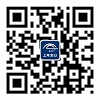
上海宝山微博